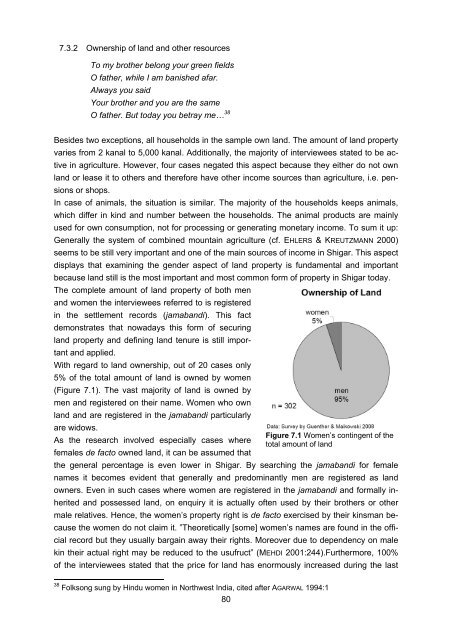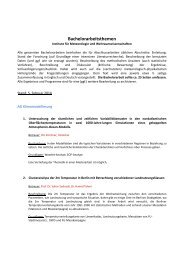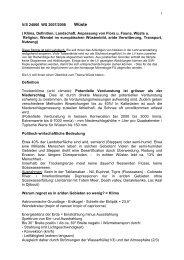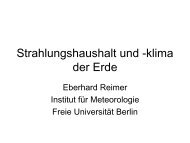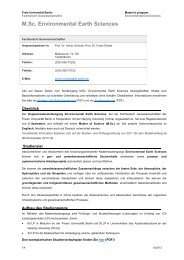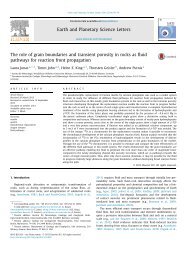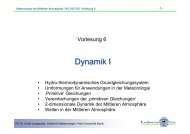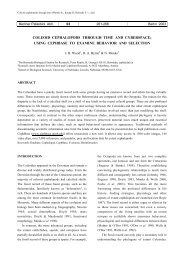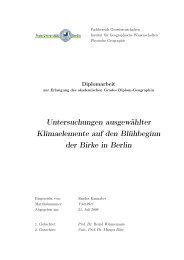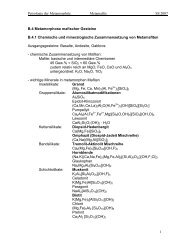Map 3.1 Shigar Oasis - Freie Universität Berlin
Map 3.1 Shigar Oasis - Freie Universität Berlin
Map 3.1 Shigar Oasis - Freie Universität Berlin
Create successful ePaper yourself
Turn your PDF publications into a flip-book with our unique Google optimized e-Paper software.
7.3.2 Ownership of land and other resources<br />
To my brother belong your green fields<br />
O father, while I am banished afar.<br />
Always you said<br />
Your brother and you are the same<br />
O father. But today you betray me… 38<br />
Besides two exceptions, all households in the sample own land. The amount of land property<br />
varies from 2 kanal to 5,000 kanal. Additionally, the majority of interviewees stated to be active<br />
in agriculture. However, four cases negated this aspect because they either do not own<br />
land or lease it to others and therefore have other income sources than agriculture, i.e. pensions<br />
or shops.<br />
In case of animals, the situation is similar. The majority of the households keeps animals,<br />
which differ in kind and number between the households. The animal products are mainly<br />
used for own consumption, not for processing or generating monetary income. To sum it up:<br />
Generally the system of combined mountain agriculture (cf. EHLERS & KREUTZMANN 2000)<br />
seems to be still very important and one of the main sources of income in <strong>Shigar</strong>. This aspect<br />
displays that examining the gender aspect of land property is fundamental and important<br />
because land still is the most important and most common form of property in <strong>Shigar</strong> today.<br />
The complete amount of land property of both men<br />
and women the interviewees referred to is registered<br />
in the settlement records (jamabandi). This fact<br />
demonstrates that nowadays this form of securing<br />
land property and defining land tenure is still important<br />
and applied.<br />
With regard to land ownership, out of 20 cases only<br />
5% of the total amount of land is owned by women<br />
(Figure 7.1). The vast majority of land is owned by<br />
men and registered on their name. Women who own<br />
land and are registered in the jamabandi particularly<br />
are widows.<br />
Figure 7.1 Women’s contingent of the<br />
As the research involved especially cases where<br />
total amount of land<br />
females de facto owned land, it can be assumed that<br />
the general percentage is even lower in <strong>Shigar</strong>. By searching the jamabandi for female<br />
names it becomes evident that generally and predominantly men are registered as land<br />
owners. Even in such cases where women are registered in the jamabandi and formally inherited<br />
and possessed land, on enquiry it is actually often used by their brothers or other<br />
male relatives. Hence, the women’s property right is de facto exercised by their kinsman because<br />
the women do not claim it. ”Theoretically [some] women’s names are found in the official<br />
record but they usually bargain away their rights. Moreover due to dependency on male<br />
kin their actual right may be reduced to the usufruct” (MEHDI 2001:244).Furthermore, 100%<br />
of the interviewees stated that the price for land has enormously increased during the last<br />
38 Folksong sung by Hindu women in Northwest India, cited after AGARWAL 1994:1<br />
80


